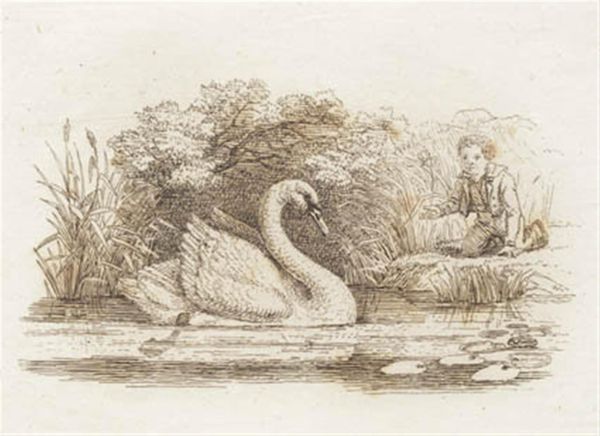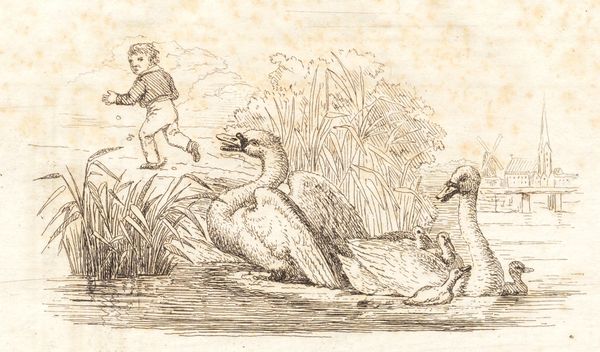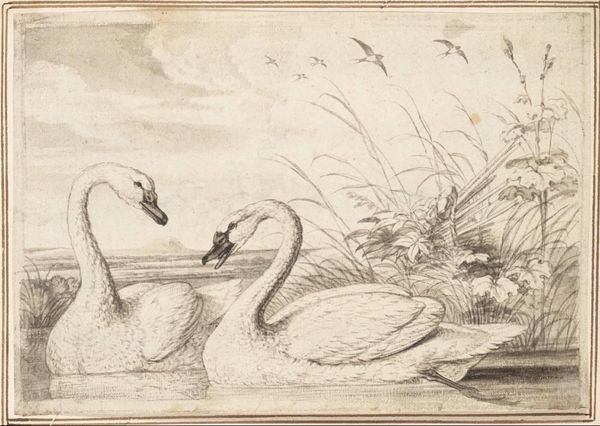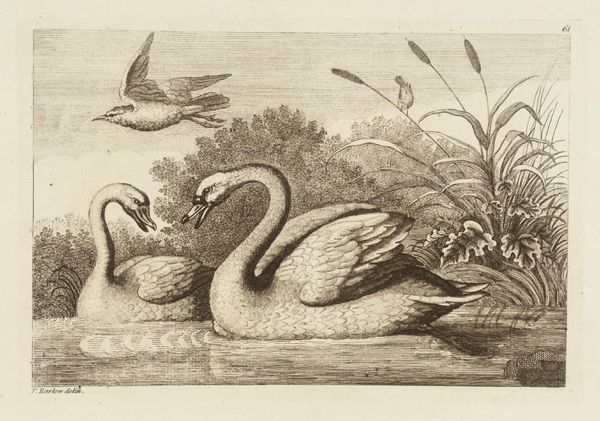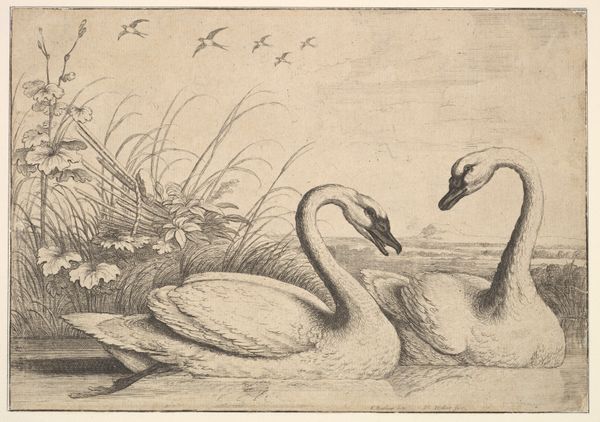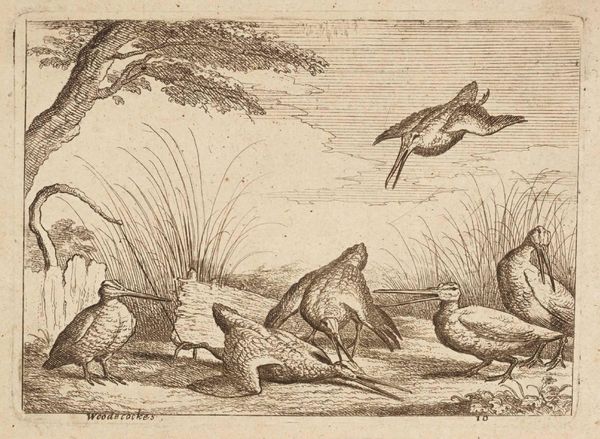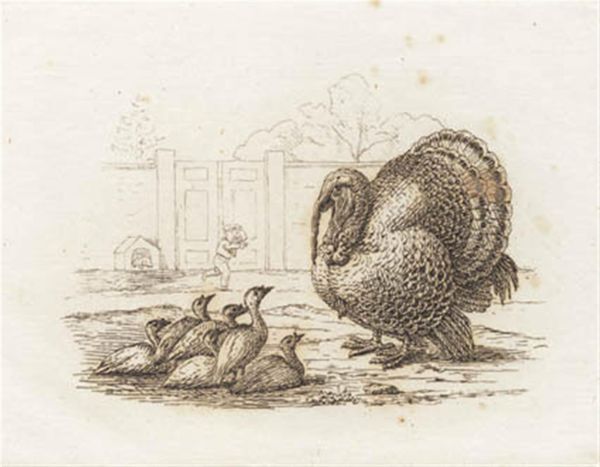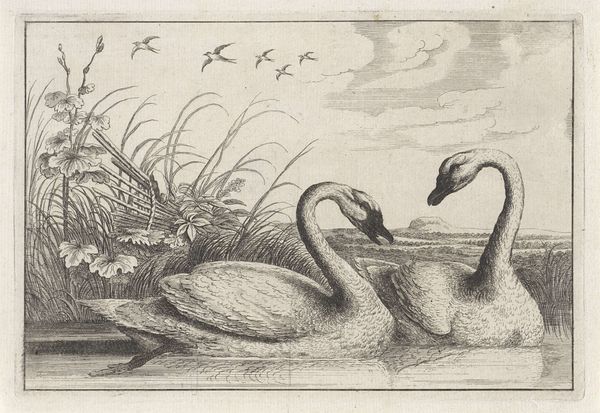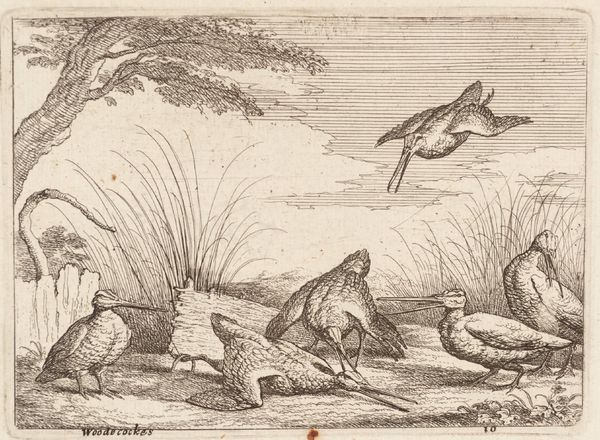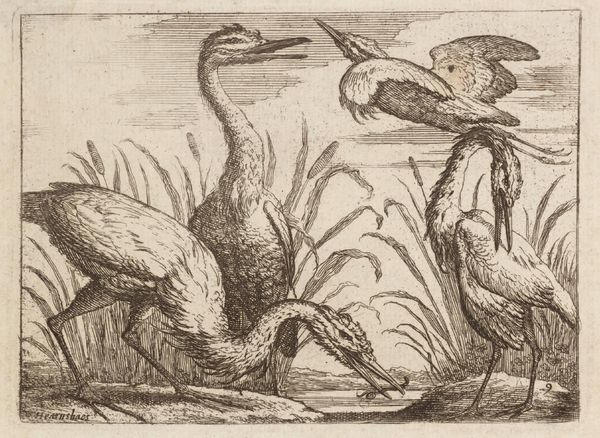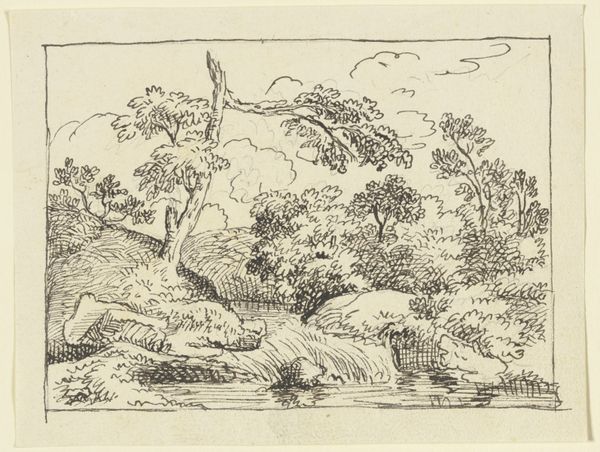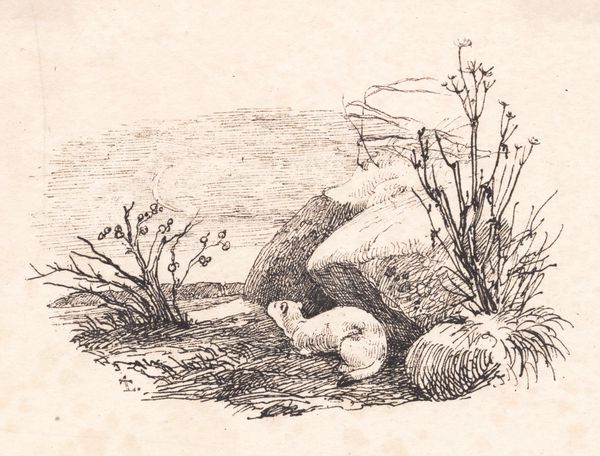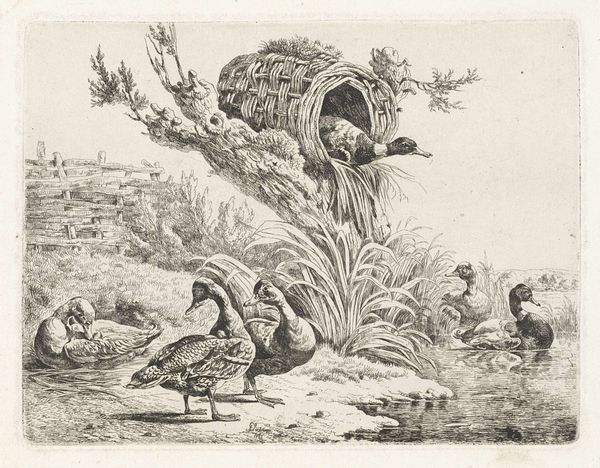
Illustration til "Halvhundrede Fabler for Børn" af Hey 1834
0:00
0:00
drawing, print, pencil, engraving
#
pencil drawn
#
drawing
# print
#
pencil sketch
#
landscape
#
figuration
#
pencil drawing
#
romanticism
#
pencil
#
engraving
Dimensions: 89 mm (height) x 115 mm (width) (bladmaal)
Editor: This is Martinus Rørbye's "Illustration til \"Halvhundrede Fabler for Børn\" af Hey," created in 1834. It's a print, based on a pencil drawing or engraving. It feels very much of its time, in a quiet, domestic way. What can you tell me about how society may have shaped the meaning of an image like this? Curator: The context of 19th-century Danish Romanticism is crucial. Consider the burgeoning bourgeois culture. Art, especially illustrations for children’s books, played a vital role in shaping moral values and social expectations. The idyllic setting and the boy’s interaction with the swan... How might these elements reflect the values being instilled in children? Editor: Perhaps an emphasis on nature and gentleness, promoting a connection to the natural world and a compassionate attitude toward animals? Curator: Precisely. Furthermore, think about the artist’s choice to create this as an illustration. Who was the audience? How does the accessibility of printmaking affect its social function? Editor: It democratizes art. More people could access it compared to, say, an oil painting displayed in a private home or gallery. It brought moral and social messages into everyday life. Curator: And with Romanticism came a certain emphasis on the individual and emotion. How do you think an illustration like this would reflect back on cultural norms about family at the time? Was the depiction of boys interacting gently with animals typical of that period? Editor: That's a perspective I had not considered, I was primarily focused on the technical skills employed and didn't place it within a bigger cultural perspective. Thank you. Curator: I think this illustrates just how multifaceted this artwork really is; its function and meaning changed over time and based on viewership, it really makes you think!
Comments
No comments
Be the first to comment and join the conversation on the ultimate creative platform.
